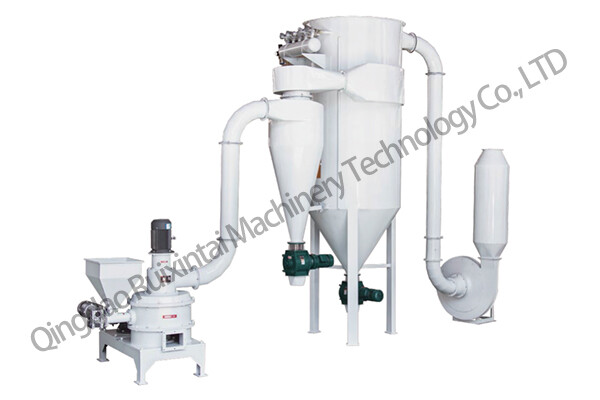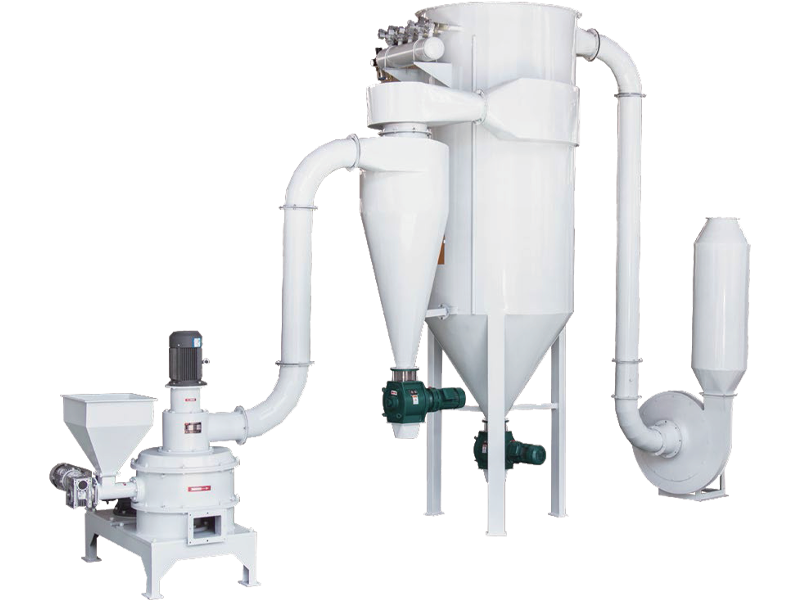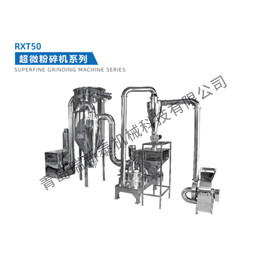The Qingdao Traditional Chinese Medicine Pulverizer System uses liquid nitrogen or a cooling machine as the cold source. The material to be pulverized is cooled and becomes brittle and easy to pulverize at low temperatures. It then enters the mechanical pulverizer chamber, where the impeller rotates at high speed. Through repeated impacts, collisions, shearing, and friction between the material, blades, and toothed plates, as well as between the material itself, the pulverization effect is achieved. The pulverized material is classified and collected by an airflow classifier. Materials that do not meet the fineness requirements are returned to the chamber for further pulverization, with most of the cold air being recycled.
This system features multifunctional automation (FMC flexibility), enabling small-batch drug production to be as simple as large-scale production lines. The ultrafine pulverizer also has the advantages of energy-saving, low noise, small footprint, and easy operation. It uses a vibration mill shearing method for pulverization, which prevents local overheating during the process, allowing it to be completed quickly and efficiently while retaining the maximum active ingredients of the drug. The benefit of low-temperature pulverization is that it can handle special materials, such as those with high fiber, high viscosity, or high sugar content.

The ultra-low temperature pulverizer is a type of pulverizer mainly used for materials that require pulverization under low-temperature conditions, commonly found in the pharmaceutical and food industries. Although the cost is relatively higher due to the need for specific environmental conditions, the importance of this method cannot be ignored, as many materials require low-temperature pulverization. So how should ultra-low temperature pulverizers be applied, and what are their characteristics? After breaking the cell walls of traditional Chinese medicines, their lipid solubility is enhanced, allowing them to easily penetrate lipid membranes and quickly increase the concentration of the drug in the body, thus achieving the desired therapeutic effect.
Related Suggestion
Online Message
CONTACT US
Please use the form below to get in touch.
If you need a reply we will get in touch as soon as possible.



